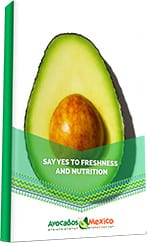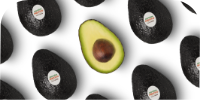
Nutrition
The Nutrient-Dense Definition: Getting to the Pit of Avocado Nutrition
Sometimes, it feels like you need an advanced degree in science just to understand food labels and nutritional claims. Even seemingly simple terms, like nutrient dense, aren’t as clear as they seem. What does it actually mean — and why does it matter?
The Food and Drug Administration defines nutrient-dense foods as “foods and beverages that contain vitamins, minerals, dietary fiber, and other beneficial substances that may have positive health effects.” These foods are also low in bad fats, sugars, starches, and sodium.
Avocados are among the foods that fit the nutrient-dense foods definition. Here’s how:
- Provide vitamins, minerals, and other substances that may have positive health benefits: Avocados contain 20 vitamins and minerals, including iron, potassium, and vitamin C. Many of these vitamins carry positive health benefits;for example, iron produces a protein that helps transport oxygen throughout your body, while potassium can help contract muscles and regulate fluids in the body.
- Dietary Fiber: Avocados are a good source of dietary fiber. With 3g of fiber per 50g serving, avocados contain 11% of your recommended daily fiber intake.
- Low in bad fats: 75% of the fat in avocados is considered good fat because it’s comprised of monounsaturated and polyunsaturated fats. These fats provide energy without increasing levels of bad cholesterol when eaten as part of a healthy diet.
- Low in sugar: Avocados are sugar-free.
- Low in starches: A serving of avocados (50g or 1/3 of a medium-sized avocado)contains 4g of total carbohydrates, which is only 1% of the recommended daily value.
- Low in sodium: Avocados are sodium-free.
Related: Learn more about all of the nutrients in avocados.
Prepping for Success
It’s not only what you cook but how you cook it that counts. Keeping the structural integrity of nutrient-dense foods is also critical to reaping their full benefits.
When prepared without solid fats, sugars, refined starches, and sodium, the following are considered nutrient-dense foods:
- Fruits and vegetables
- Whole grains
- Seafood, lean meats, and poultry
- Eggs and fat-free and low-fat milk
- Beans and peas
- Unsalted nuts and seeds
As a fruit, avocadosare no exception. There are many ways to prepare avocado without altering its nutrient-dense status; for example, try using avocado as a basefor dishes ranging from smoothies to dips.
Why and How to Get the Nutrient-Dense Goods
Over time, eating nutrient-dense foods, like avocados,as part of an overall healthy diet can help limit the threat of health issues such as Type 2 diabetes, heart disease, and certain types of cancer.
Many nutrient-dense foods also feature fiber, which can balance blood sugars, prevent constipation, lower cholesterol, and help you feel full faster. With 3g of fiber per 50g serving, avocados contain 11% of your recommended daily fiber intake.
How to Add Nutrient-Dense Foods to Your Diet
Avocados are an easy way to incorporate nutrient-dense goodness into your meals. Before making any changes to your diet, talk to your doctor about how you can incorporate nutrient-dense foods into your eating routine. He or she may provide a list of healthy foods, including avocados. Once you get the go-ahead, visit our avocado recipes page for more nutrient-dense meals starring avocados.
Want even more avocado info?
Provide your email address to download a free recipe e-book.As promised here is your FREE RECIPE e-BOOK Download Recipe E-book

























